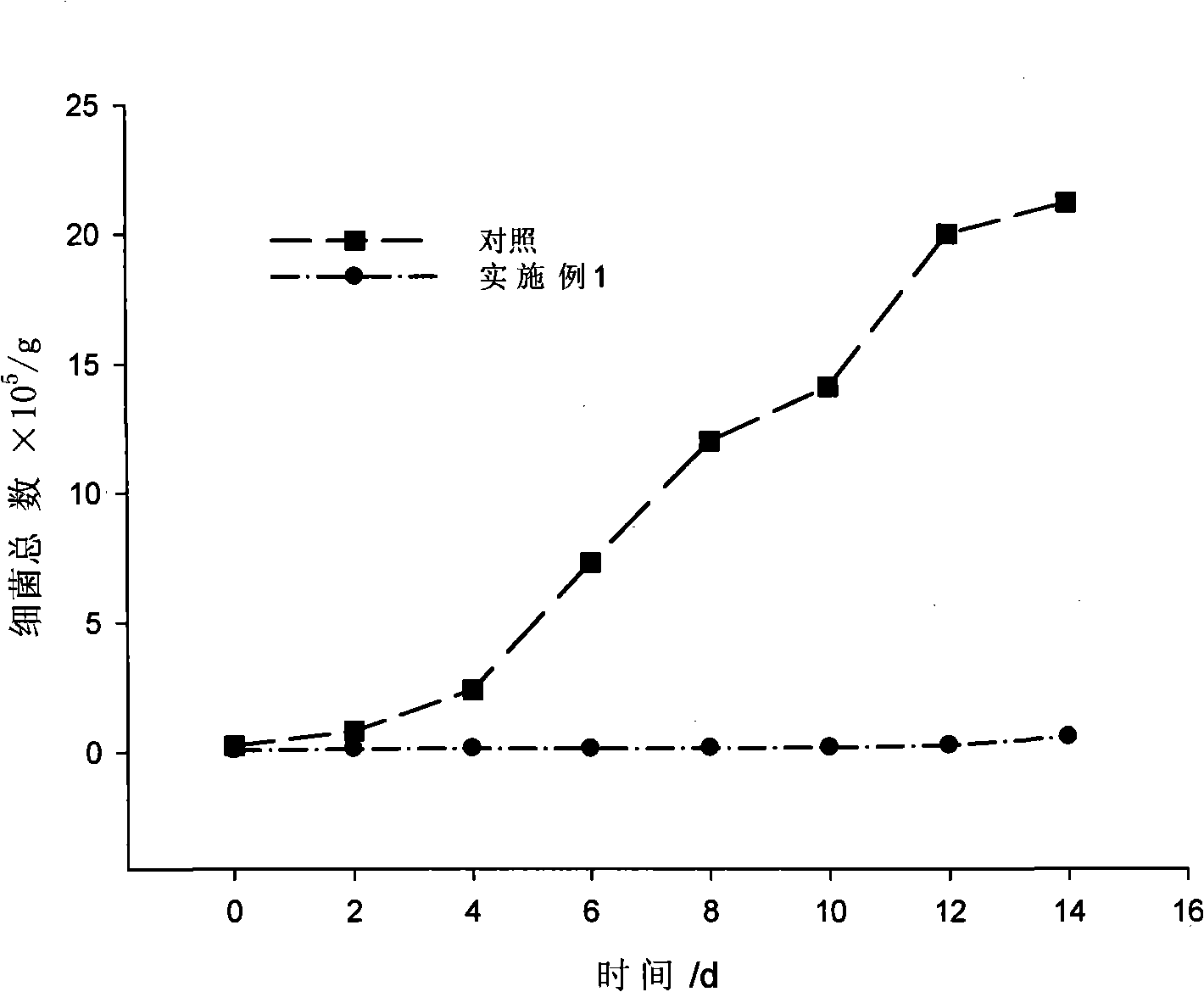Fresh-keeping method for seafood
A fresh-keeping method and seafood technology, which are applied in the fields of food preservation, preservation of meat/fish with chemicals, preservation of meat/fish, etc. The effect of shelf life
- Summary
- Abstract
- Description
- Claims
- Application Information
AI Technical Summary
Problems solved by technology
Method used
Image
Examples
Embodiment 1
[0024] Embodiment 1: (the preservation method of pomfret)
[0025] To preserve pomfret, follow the steps below:
[0026] (1) Sorting of raw materials: grading the fresh pomfrets that meet the standards, and picking out defective products and impurities;
[0027] (2) Chlorine dioxide treatment: 2% concentration stable chlorine dioxide and citric acid are formulated into 20000ppm chlorine dioxide solution by volume weight 50 milliliters: 1 gram ratio, add water and be diluted into 50ppm chlorine dioxide solution; After cooling down to 0°C, pour in the raw materials of step (1), soak for 10 minutes, pick up, and set aside;
[0028] (3) Preparation and treatment of slow-release chlorine dioxide: first mix 2% concentration of stable chlorine dioxide, cross-linked polyacrylamide and citric acid in a ratio of 100 milliliters by volume and weight: 2 grams: 1 gram, and mix and prepare a viscous Colloidal slow-release chlorine dioxide; apply the slow-release chlorine dioxide to the po...
Embodiment 2
[0031] Embodiment 2: (the preservation method of hairtail)
[0032] In this example, 2% concentration of stable chlorine dioxide and citric acid are prepared into a 20000ppm chlorine dioxide solution in a ratio of 50:1 by volume and weight, and then diluted with water to form an 80ppm chlorine dioxide solution; after the solution is cooled to 0°C Pour the hairtail into it and soak it for 8 minutes; 2% concentration of stable chlorine dioxide, cross-linked polyacrylamide and citric acid are mixed according to the volume and weight of 120 milliliters: 3 grams: 2 grams to form a viscose slow-release type II Chlorine oxide is applied to the surface of the hairtail; the fresh-keeping hairtail is weighed, packaged and sealed and transported in a refrigerated truck at -1 to 0°C; the rest of the process and conditions are the same as in Example 1.
Embodiment 3
[0033] Embodiment 3: (the preservation method of Penaeus vannamei)
[0034] In this example, 2% concentration of stable chlorine dioxide and citric acid are formulated into a 20000ppm chlorine dioxide solution in a ratio of 50:1 by volume and weight, and then diluted with water to form a 30ppm chlorine dioxide solution; after the solution is cooled to 0°C Pour the prawns in and soak for 15 minutes; 2% concentration of stable chlorine dioxide, cross-linked polyacrylamide and citric acid are mixed in a ratio of 80 milliliters by volume: 2 grams: 1 gram to form a viscose slow-release type II Chlorine oxide is applied to the surface of prawns; the fresh prawns are weighed, packaged and sealed and stored in a fresh-keeping warehouse at -1 to 0°C; the rest of the process and conditions are the same as in Example 1.
PUM
 Login to View More
Login to View More Abstract
Description
Claims
Application Information
 Login to View More
Login to View More - R&D
- Intellectual Property
- Life Sciences
- Materials
- Tech Scout
- Unparalleled Data Quality
- Higher Quality Content
- 60% Fewer Hallucinations
Browse by: Latest US Patents, China's latest patents, Technical Efficacy Thesaurus, Application Domain, Technology Topic, Popular Technical Reports.
© 2025 PatSnap. All rights reserved.Legal|Privacy policy|Modern Slavery Act Transparency Statement|Sitemap|About US| Contact US: help@patsnap.com


